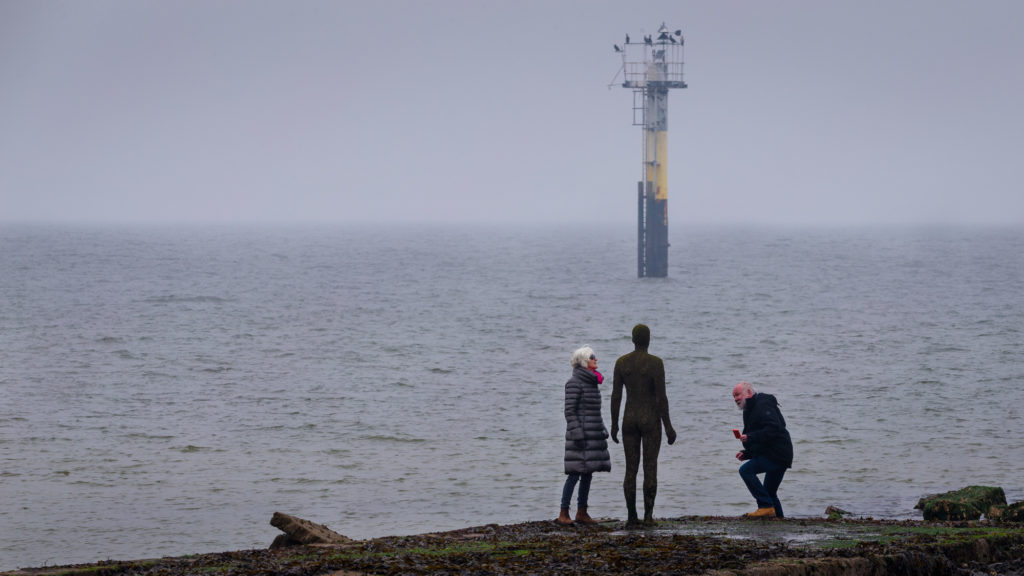I’ve been thinking about Antony Gormley today. I can’t explain why Gormley is in mind except that his work is something I miss about living in the UK. His public work is just that, accessible to all.

There’s a cast iron statue on Fulsam Rock beside Turner Contemporary in Margate. It’s one of the 100 casts of Gormley himself that he called Another Time. It was placed there in 2017 and it is expected to remain there until next month, November 2020. It’s just one of his many public works, many of which I’ve visited several times.
Gormley has said of his art that ‘The history of western sculpture has been concerned with movement. I wish to celebrate the still and silent nature of sculpture. The work is designed to be placed within the flow of lived time.’
We have enjoyed seeing Gormley all over the UK and in particular, we were very impressed by the RA exhibition in 2019. We visited it many times and generally, as soon as the doors opened so that we had the gallery space almost to ourselves. A wonderful privilege.
I wrote here of billionaire David Nahmad who said that he didn’t believe art should be unseen by the public. Should art always be public?
One day in September 2019, we made an early morning visit to Gormley in the RA and I used my camera to make scarves. I made two scarves from pictures I took of his work and I was inspired to make three more from my own moonrise photographs later. Five scarf designs on the same day.
It’s not a coincidence that some of the these are inverted. Gormley does that a lot too. His inversion of the doodle on paper to fill a room with steel wire took my breath away. Clearing is a filling, like a the cream in a cake, transient yet somehow persistent.

Gormley’s Rebar. 
Cave Exit. Gormley’s ‘Cave’ at the RA, from inside his steel foetal shape. 
City Moon. 
Sunset Approaches. 900 mm at ISO 4000. 
City Reflections. Neon signage removed.
My photography is continually inspired by sculpture. It’s hard to represent three dimensionality on a flat surface. Instead, I seek to capture an essence from the familiar.
It’s much harder to bring an image from a plane into full view. Once done, it can be forever. As Gormley has said ‘Sculpture is the most challenging and resilient of art forms. It is the greatest agent of change of all art forms.’

Leave a Reply